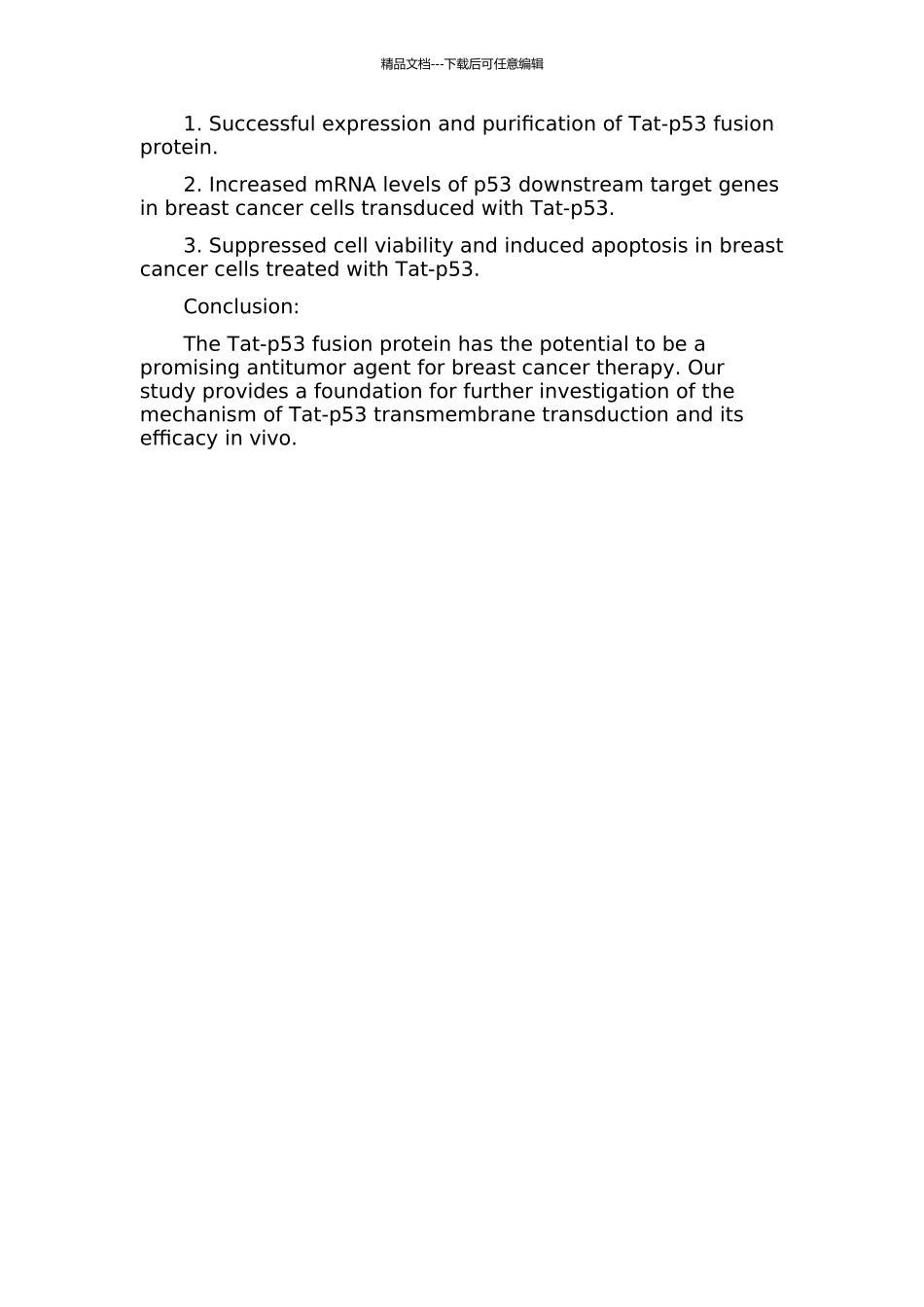精品文档---下载后可任意编辑Tat--p53 融合蛋白在乳腺癌细胞的基因表达、分离纯化及跨膜转导活性的开题报告Title: Gene expression, purification, and transmembrane transduction activity of Tat-p53 fusion protein in breast cancer cellsIntroduction:Breast cancer is one of the most common malignancies in women around the world. Tumor suppressor p53 plays a crucial role in the regulation of cell cycle and apoptosis, and its inactivation is closely related to the occurrence and development of breast cancer. However, the application of p53 in breast cancer treatment is limited by its poor cellular uptake and short half-life in circulation. To overcome these problems, a fusion protein of p53 and Tat protein (Tat-p53) has been developed, which can penetrate cell membranes and exert its tumor-suppressing activity in cancer cells. In this study, we aim to investigate the expression, purification, and transmembrane transduction activity of Tat-p53 fusion protein in breast cancer cells.Methods:1. Construction of Tat-p53 expression plasmid: A fusion gene of p53 and Tat protein was synthesized and inserted into a prokaryotic expression vector.2. Protein expression and purification: Recombinant Tat-p53 protein was expressed in Escherichia coli and purified by affinity chromatography.3. Cell culture and transduction: Breast cancer cell lines MCF-7 and MDA-MB-231 were cultured and transduced with Tat-p53 protein.4. Gene expression analysis: The mRNA levels of p53 downstream target genes (p21, Bax, and MDM2) were analyzed by qRT-PCR.5. Cell viability and apoptosis assay: The effects of Tat-p53 on cell viability and apoptosis were assessed by MTT assay and flow cytometry.Expected results:精品文档---下载后可任意编辑1. Successful expression and purification of Tat-p53 fusion protein.2. Increased mRNA levels of p53 downstream target genes in breast cancer cells transduced with Tat-p53.3. Suppressed cell viability and induced apoptosis in breast cancer cells treated with Tat-p53.Conclusion:The Tat-p53 fusion protein has the potential to be a promising antitumor agent for breast cancer therapy. Our study provides a foundation for further investigation of the mechanism of Tat-p53 transmembrane transduction and its efficacy in vivo.

